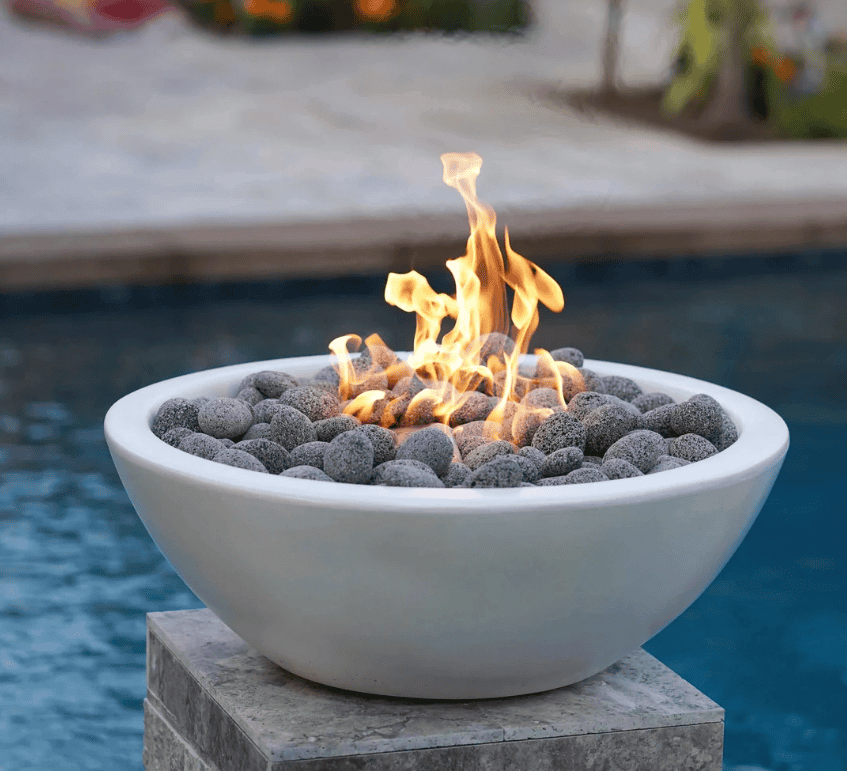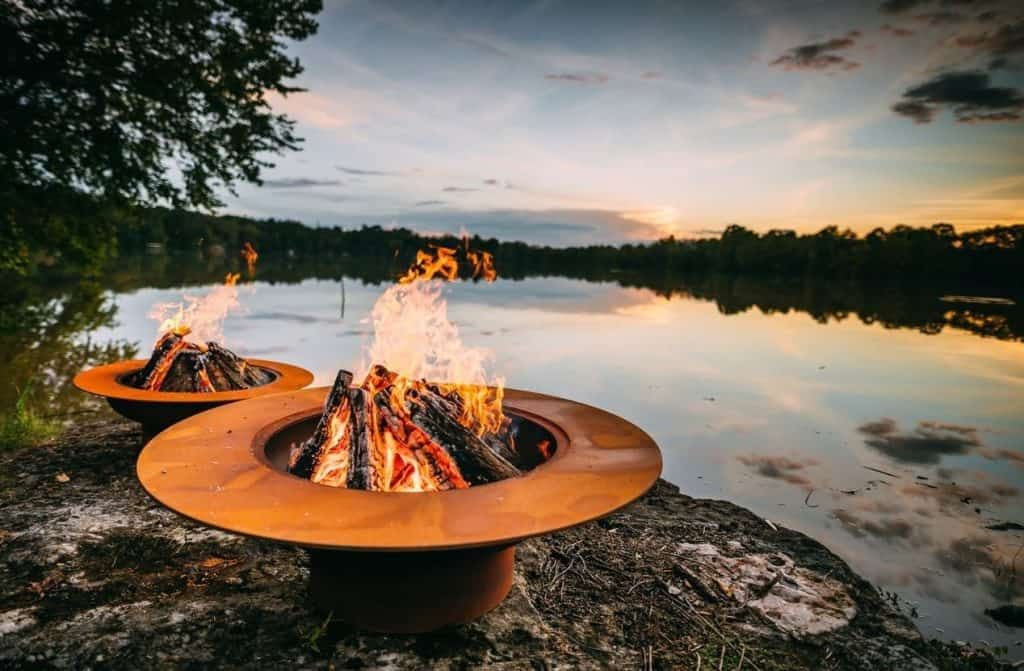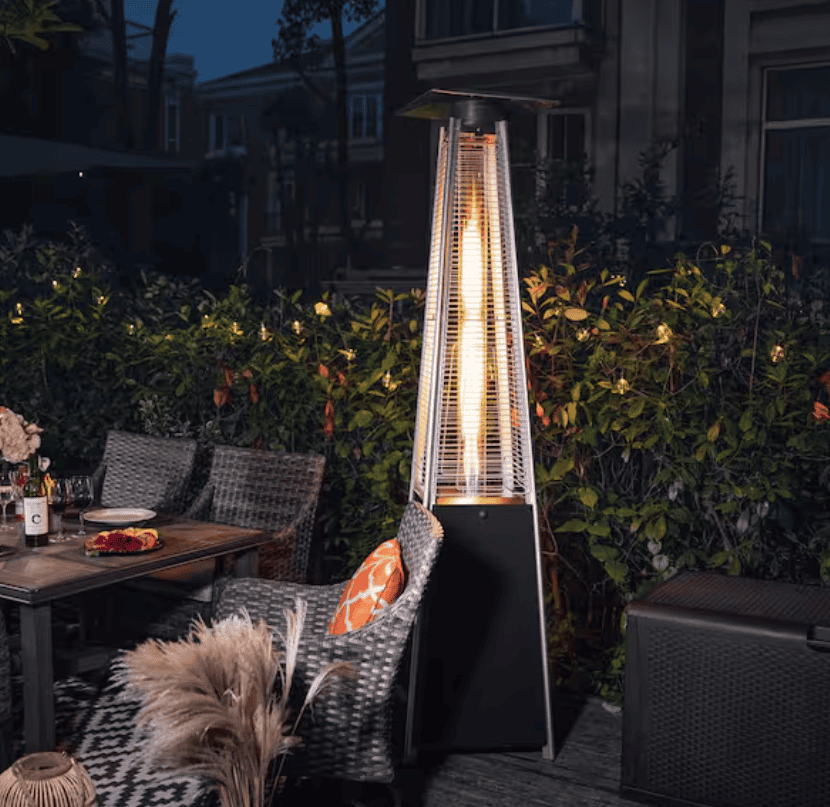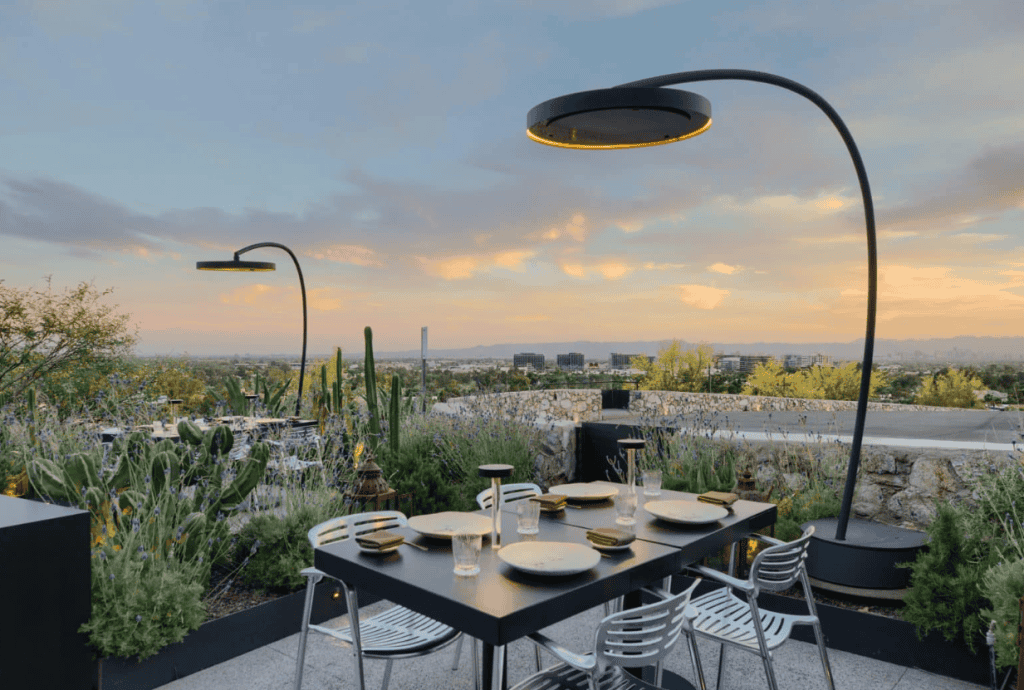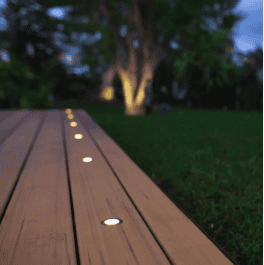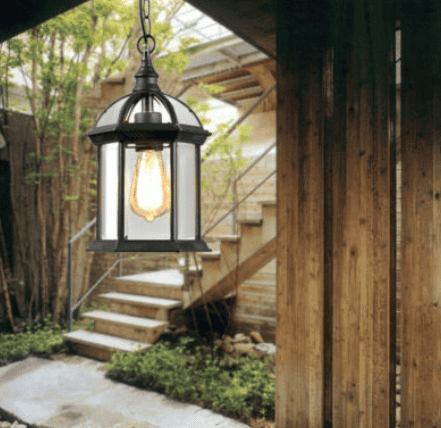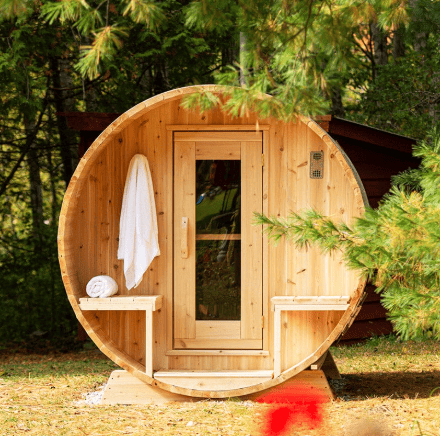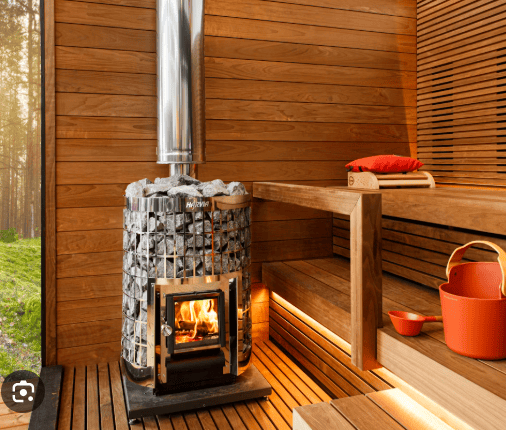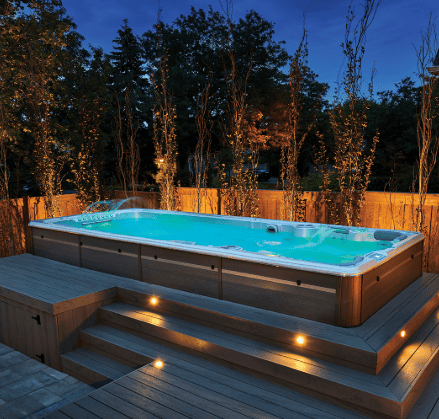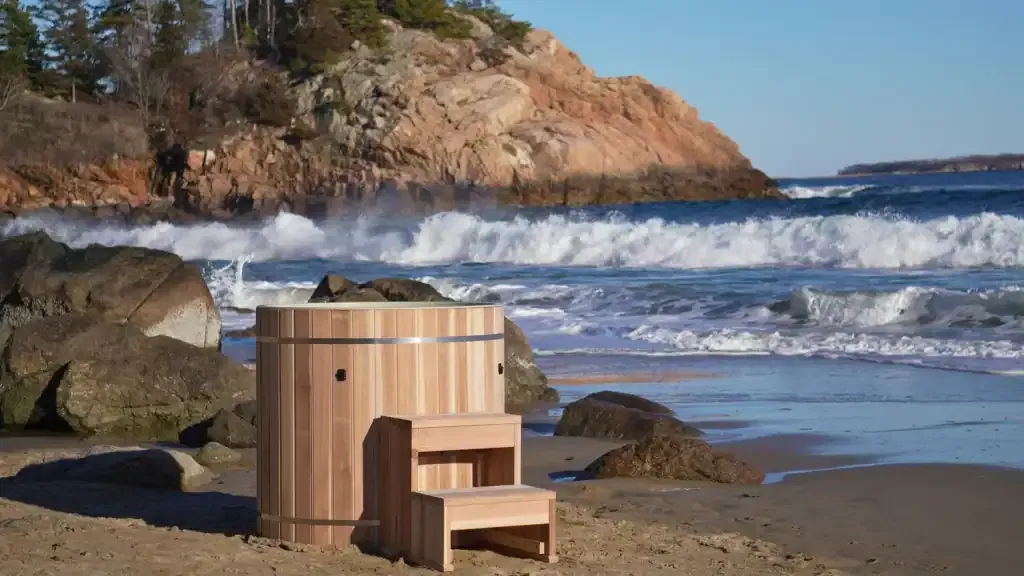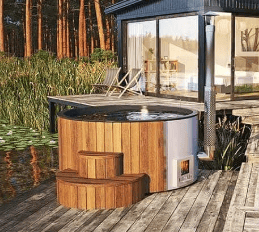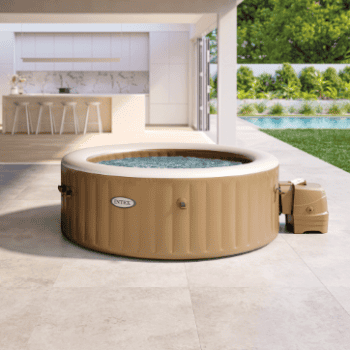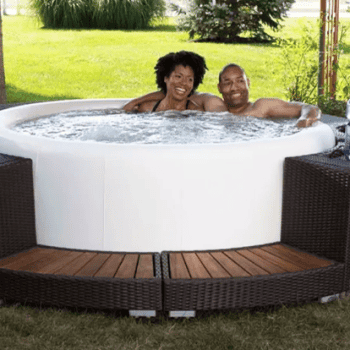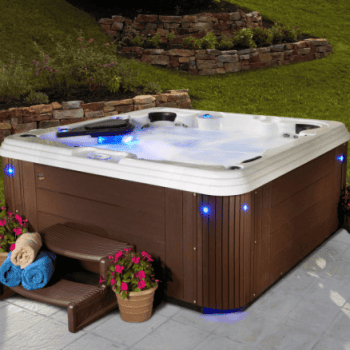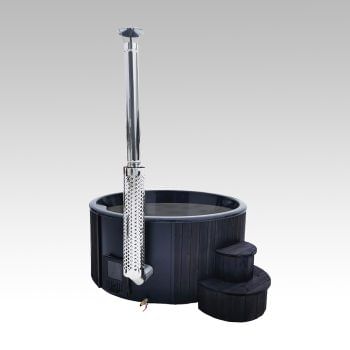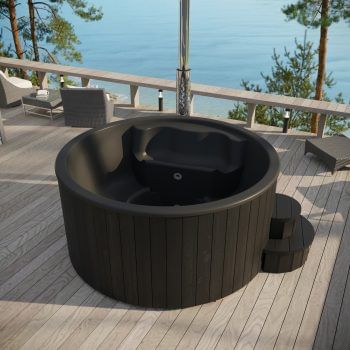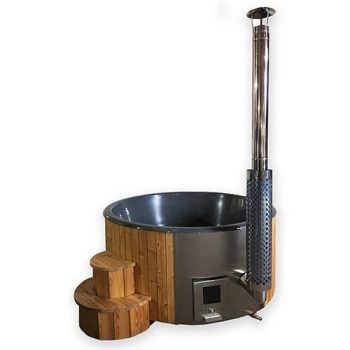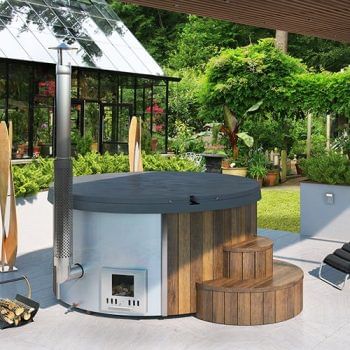Wood Fired Hot Tub Collection: The Best Wooden Hot Tubs for a Cozy Soak
Welcome to our curated collection of wood fired hot tubs, where the timeless allure of natural wood meets the soothing warmth of a wood fire. Escape the ordinary and immerse yourself in the authentic experience of a wood-fired hot tub. Discover the perfect wooden hot tub for your backyard and indulge in the ultimate relaxation.
Introduction to Wood Fired Hot Tubs
What is a Wood Fired Hot Tub?
A wood fired hot tub, also known as a wood burning hot tub, is a type of hot tub that uses a wood stove to heat the water. Unlike an electric hot tub, which relies on electricity, a wood-fired hot tub provides a unique, off-grid soaking experience. The heat from the wood fire is transferred to the hot tub water, creating a natural and relaxing environment. Typically, the hot tub is made of wood, often cedar, which is known for its durability and resistance to decay.
Benefits of Wood Burning Hot Tubs
The benefits of a wood burning hot tub are numerous. The appeal starts with its ability to provide heat without relying on electricity, making it a perfect solution for off-grid locations or for those looking to reduce their energy consumption. The experience of tending to the wood fire adds a rustic, almost meditative quality to the soaking ritual. Also, many find the gradual heating of the tub water more relaxing than the sudden blast of an electric hot tub. A wood fire heated hot tub provides a unique and natural hot tub experience.
Why Choose a Wooden Hot Tub?
Choosing a wooden hot tub, especially a cedar tub, offers several advantages. Cedar wood is naturally resistant to decay, insects, and moisture, making it an ideal material for outdoor use. The natural oils in cedar help to preserve the wood and give it a pleasant aroma, enhancing the soaking experience. Furthermore, a wooden hot tub offers a classic, aesthetically pleasing look that complements any backyard setting. A wooden hot tub wood burner set up adds a touch of natural beauty and sustainable luxury to your life.
Types of Wood Fired Hot Tubs
Cedar Hot Tubs: Natural Beauty and Durability
A cedar hot tub represents the quintessential wood fired hot tub experience, celebrated for its natural resistance to decay and its aromatic qualities. Crafted from cedar wood, often western red cedar, these tubs offer a durable and aesthetically pleasing option for those seeking a traditional wood-burning hot tub. Because the cedar tub is naturally resistant to insects, the cedar hot tub becomes a long-lasting addition to any backyard, offering a naturally beautiful space to heat the water and enjoy a relaxing wood fire.
Wood Burning Hot Tub Options
When exploring wood burning hot tub options, consider the variety of designs and materials available. Beyond the classic cedar tub, there are options that incorporate different types of wood and heating systems. A log burner for a hot tub can vary in size and efficiency, affecting the heating time of the hot tub water. Some wood-burning hot tub models feature internal tub stoves, while others have external wood stoves, each offering a unique approach to heat and space utilization. A wood stove powered hot tub provides a simple and easy way to enjoy your hot tub.
Comparing Wood Fired Wood Hot Tub Designs
Comparing different wood fired wood hot tub designs involves evaluating factors such as size, shape, and heating efficiency. Some designs feature a traditional round tub shape, reminiscent of old-fashioned soaking tubs, while others offer more modern, geometric designs. The placement of the tub stove also plays a role, with internal stoves offering faster heating times but taking up space inside the hot tub, while external stoves allow for more soaking room. Ultimately, the best wooden hot tub wood burner design depends on your individual preferences and backyard layout.
FAQ About Wood Fired Hot Tubs
How long does it take to heat a wood fired hot tub?
The heating time for a wood fired hot tub varies depending on several factors, including the size of the tub, the type of wood used, and the outdoor temperature. Generally, it takes between 2 to 4 hours to heat the hot tub water to a comfortable soaking temperature. Using dry, seasoned firewood and properly insulating the tub can help reduce the heating time. A wood stove powered hot tub will heat the water steadily, providing a relaxing and gradual warm-up.
What type of wood should I use for my wood burning hot tub?
The type of wood you use in your wood burning hot tub significantly impacts its heating efficiency and overall experience. Hardwoods like oak, maple, and birch are excellent choices because they burn hotter and longer than softwoods. Softwoods, such as pine, can be used but require more frequent refueling. Dry, seasoned firewood is crucial for optimal burning and minimal smoke. Consider the type of wood available in your area and its BTU output to maximize your heat.
How do I maintain the water quality in my wood fired hot tub?
Maintaining hot tub water quality in a wood-fired hot tub involves regular cleaning and water treatment. Since these tubs typically don't have the same filtration systems as electric hot tubs, you'll need to manually clean the tub regularly to remove debris. Using a natural water treatment like salt water or adding a small amount of chlorine can help keep the water clean and clear. Regularly draining and refilling the tub is also essential for maintaining good water quality.
Are wood fired hot tubs safe?
Wood fired hot tubs are generally safe when used correctly. Key safety considerations include ensuring the tub stove has proper ventilation and a chimney to vent smoke away from the soaking area. It's also important to keep the fire contained within the stove and to never leave the fire unattended. Regularly inspect the tub and stove for any signs of damage or wear to prevent accidents. Always follow the manufacturer's instructions and local safety guidelines to ensure a safe and enjoyable wood fire experience. A good land stove is a great option to ensure safety.
Can I use a wood fired hot tub in the winter?
Yes, you can absolutely use a wood fired hot tub in the winter! In fact, many people find it even more enjoyable to soak in a hot, wood-heated tub surrounded by snow. The key is to ensure you have enough firewood on hand to keep the fire burning and to insulate the tub properly to minimize heat loss. Be mindful of ice buildup around the tub and stove, and take extra precautions to prevent slips and falls. The contrast between the cold air and the warm hot tub water creates a unique and invigorating experience.
Installation and Maintenance
Setting Up Your Wood Fire Heated Hot Tub
Setting up your wood fire heated hot tub requires careful planning to ensure safety and efficiency. Begin by selecting a level location for the hot tub; it's important that the tub is stable to prevent any potential issues. Next, install the tub stove and chimney according to the manufacturer's instructions, ensuring proper ventilation. Consider the proximity to your wood supply for convenience and the prevailing wind direction to minimize smoke exposure. Filling the tub with water and starting a small fire to test the heating process is advisable before full use.
Maintenance Tips for Wooden Hot Tubs
Maintaining your wooden hot tub is crucial for longevity and hygiene. Regularly inspect the cedar tub and wooden hot tub staves for any signs of wear, rot, or leaks. Clean the hot tub water frequently to prevent the buildup of algae and bacteria, and consider using a natural sanitizer such as salt water. Periodically oiling the wood will help to prevent it from drying out and cracking. Always drain the tub completely when not in use for extended periods, especially during freezing temperatures. The proper upkeep of your wooden hot tub is important.
Choosing a Log Burner for Your Hot Tub
Selecting the right log burner for your hot tub is essential for efficient heat and a safe soaking experience. Consider factors such as the size of your wooden hot tub, the climate you live in, and your desired heating time. A larger tub naturally requires a more powerful wood stove. Look for a tub stove made from durable materials like marine grade aluminum or stainless steel to resist corrosion. Ensure the wood stove has a properly sized chimney for adequate ventilation and safety. The proper log burner for a hot tub makes the experience more enjoyable.
Performance and Heating Efficiency
Understanding Wood Stove Powered Hot Tub Heating
Understanding how a wood stove powered hot tub works is key to maximizing its heating efficiency. The tub stove transfers heat to the hot tub water through conduction. The size and design of the tub stove, as well as the type of wood you burn, significantly impact the heating time. Proper insulation of the tub helps to retain heat and reduce the amount of firewood needed. Regular maintenance of the wood stove ensures efficient burning and prevents the buildup of creosote, improving safety.
Factors Affecting Heat Retention in Wood Fired Hot Tubs
Several factors influence heat retention in wood fired hot tubs. The quality of the tub insulation plays a crucial role; well-insulated tubs lose heat more slowly. The type of wood used affects the fire's intensity and duration. Covering the hot tub when not in use minimizes heat loss through evaporation. The ambient temperature also has a significant impact, with colder temperatures causing faster heat dissipation. Effective heat retention is essential for enjoying a long, relaxing soak without constantly adding more wood to the fire.
Comparing Electric Hot Tub vs. Wood Burning Options
When deciding between an electric hot tub and a wood burning hot tub, consider the differences in energy consumption, maintenance, and overall experience. Electric hot tubs offer convenience and consistent temperatures but rely on electricity, resulting in ongoing energy costs. Wood burning options provide a more rustic, off-grid experience and may be more cost-effective in areas with readily available firewood. Wood-fired hot tubs require more manual effort in terms of fueling the fire and monitoring the hot tub water temperature, but the natural ambiance and reduced reliance on electricity make them an appealing choice for many.
Popular Features of Wood Burning Hot Tubs
Customizable Features for a Personal Touch
One of the most appealing aspects of a wood burning hot tub is its ability to be customized to your personal preferences. From selecting the type of wood the hot tub is made from, such as cedar or redwood, to choosing the size and shape of the wooden hot tub, you can create a soaking tub that reflects your unique style. You can also select features like built-in seating, steps, or even an integrated hot tub kit. Adding jets can provide a massaging effect, similar to an electric hot tub, enhancing the overall relaxation experience.
Eco-Friendly Benefits of Wood Fired Hot Tubs
Choosing a wood fired hot tub offers several eco-friendly benefits. Primarily, wood-fired hot tubs reduce reliance on electricity, especially if you choose a wood stove powered hot tub. Using sustainably sourced firewood as a fuel source is a renewable energy option. Wood burning is more environmentally friendly. While burning wood does produce some emissions, it can be carbon neutral if the wood comes from sustainably managed forests. This contrasts with electric hot tubs, which contribute to the demand for electricity generated from fossil fuels.
How to Enhance Your Soaking Experience
Enhancing your soaking experience in a wood-fired hot tub involves paying attention to the details that create a relaxing atmosphere. Proper hot tub water temperature management is key. Ensure the wood is dry and seasoned for efficient burning and minimal smoke. Consider adding aromatherapy oils or Epsom salts to the hot tub water for added therapeutic benefits. Soft lighting, comfortable seating, and a quiet environment can transform your wood hot tub soak into a luxurious spa-like retreat. Remember to keep the water clean to maintain hygiene.
FAQs about Wood Fired Hot Tubs
How long does it take to heat a wood burning hot tub?
The heating time for a wood burning hot tub can vary widely, depending on several factors. The size of the hot tub, the type of wood used, and the ambient temperature all play a role. Generally, expect a range of 2 to 4 hours to heat the hot tub water to a comfortable soaking temperature, but using dry, seasoned firewood and keeping the tub insulated can help reduce heating time. The efficiency of your wood stove powered hot tub will also influence how quickly the hot tub heats up.
What type of wood is best for a wood fired hot tub?
The type of wood you use in your wood fired hot tub significantly impacts its heating efficiency and your overall experience. Hardwoods like oak, maple, and birch are excellent choices because they burn hotter and longer compared to softwoods. Softwoods, such as pine, can be used, but they require more frequent refueling. Dry, seasoned firewood is crucial for optimal burning and minimal smoke. Knowing the type of wood available in your area and its BTU output will maximize the wood-burning potential of your wood stove and get the heat you are looking for.
Can you use a wood burning hot tub in winter?
Yes, you can absolutely use a wood burning hot tub in the winter! Many people find it especially enjoyable to soak in a wood-fired hot tub surrounded by snow. Ensure that you have enough firewood on hand to keep the fire burning and that the tub is properly insulated to minimize heat loss. Be mindful of potential ice buildup around the tub and stove and take extra precautions to prevent slips and falls. The contrast between the cold air and the warm hot tub water creates a unique and invigorating experience.

